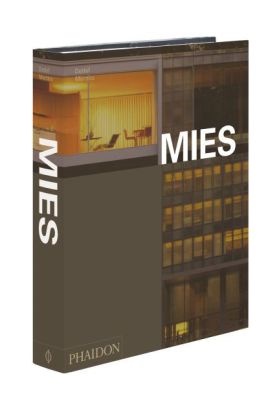Read more
Informationen zum Autor Detlef Mertins (1954-2011) made lasting contributions to the theory and history of modernism in architecture! art! philosophy! and urbanism. From 2002 to 2007! he was Professor of Architecture and Chair of the Department of Architecture at the University of Pennsylvania. He also taught at the University of Toronto and! as a visiting professor! at Columbia University! Harvard University! Princeton University and Rice University. Among his many published books are Modernity Unbound (2011); G: An Avant-Garde Journal of Art! Architecture! Design! and Film! 1923-1926 (2010)! co-edited with Michael Jennings; The Presence of Mies (1994) and Metropolitan Mutations: The Architecture of Emerging Public Spaces (1989). Mertins also published numerous essays in scholarly journals and anthologies! as well as critical writings on contemporary architecture. Klappentext The most definitive monograph ever published on the modern master of architecture Mies van der Rohe (1886-1969). Truly unprecedented in scope and copiously illustrated with over 700 original drawings! contemporary and archive photographs! plans and diagrams. Includes some of the 20th century's most iconic buildings! such as the Barcelona Pavilion in Spain! the Tugendhat House in the Czech Republic! the New National Gallery in Germany! the Crown Hall at IIT! and the Seagram Building in New York. A rich and highly readable text written by Detlef Mertins traces the aesthetic and intellectual context for all Mies's work! with in-depth discussions of his most important buildings and projects. Zusammenfassung Mies is the most readable, beautiful and comprehensive book ever published on one of the twentieth century's most influential architects. Known for the beauty and purity of his work, Ludwig Mies van der Rohe built remarkable houses, skyscrapers, museums and multi-building campuses. The clarity of this architecture belies the diversity of Mies's interests, which included philosophy and science as well as design, and Detlef Mertin's rigorous and accessible text gives the reader both a clear description of all of the most important buildings as well as the intellectual contexts for their design. The book will illustrate all of Mies's work with over 700 images, and will be a highly desirable object; the large format and generous extent allows for the reproduction of all the photographs, drawings and details essential to understand Mies's work....

